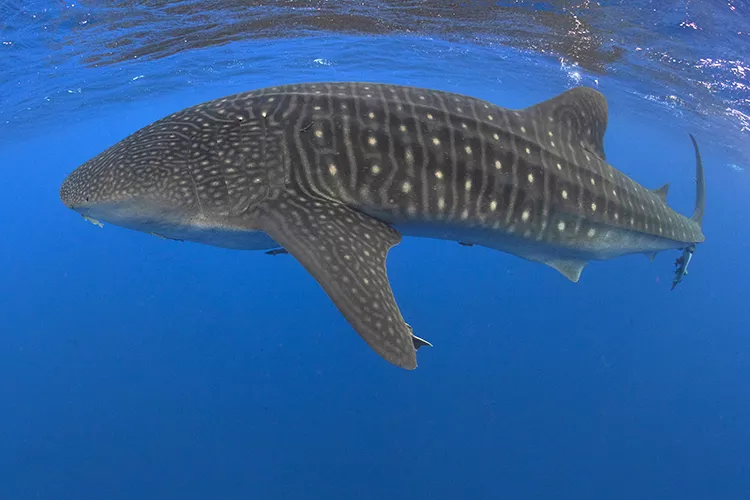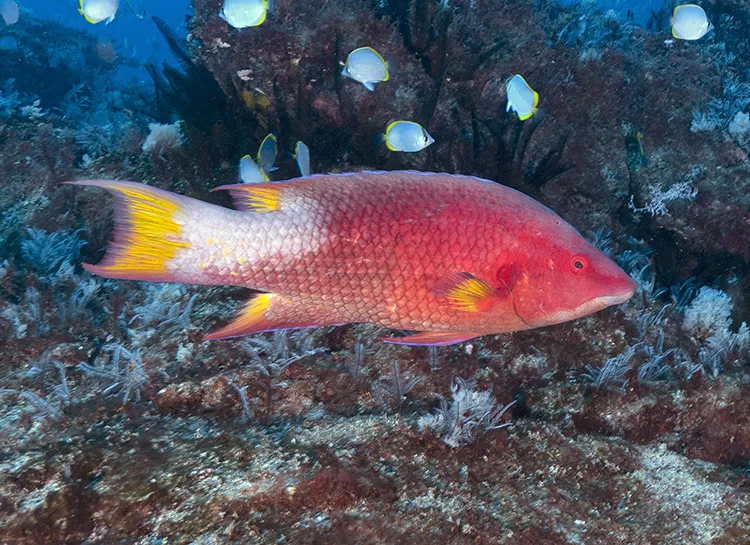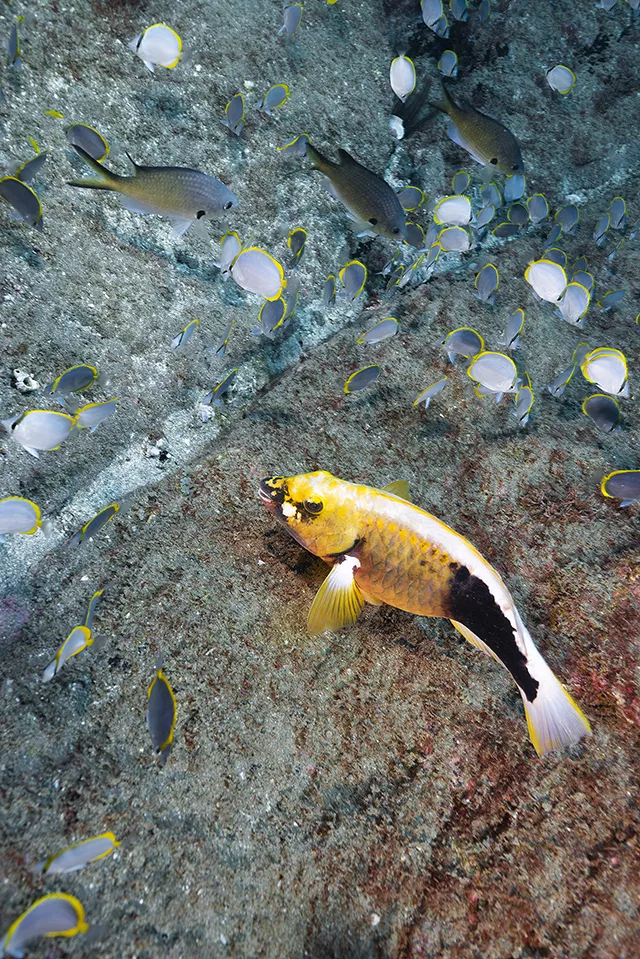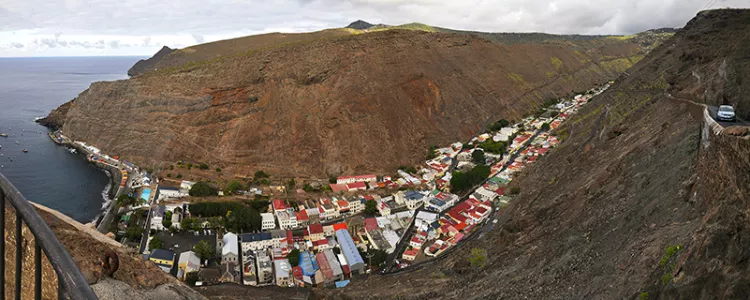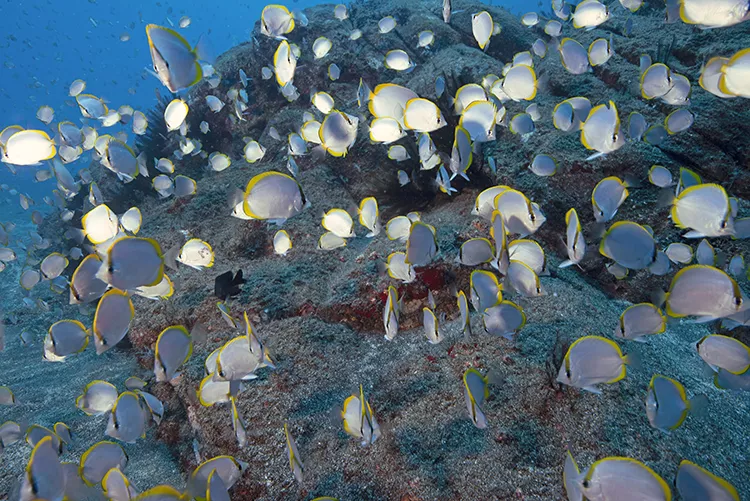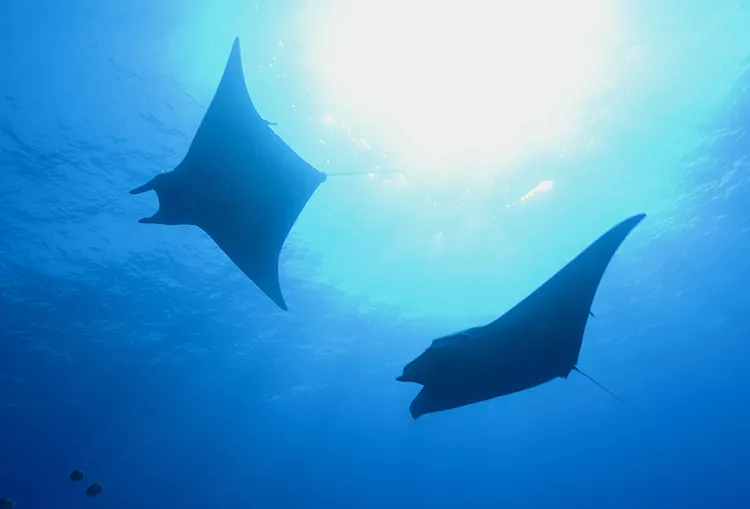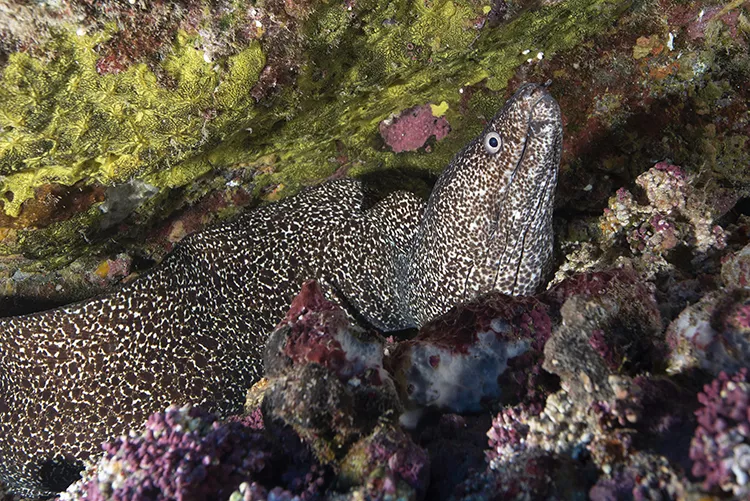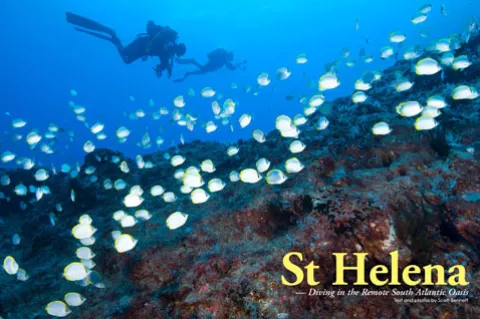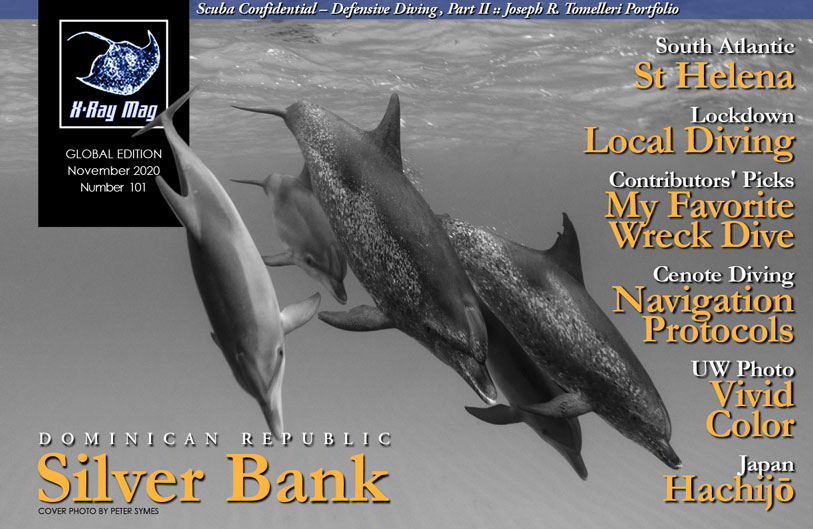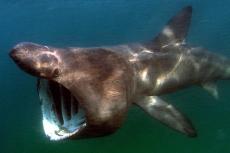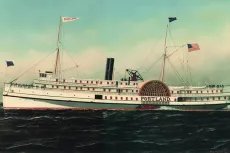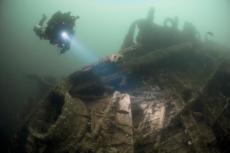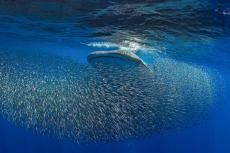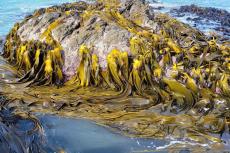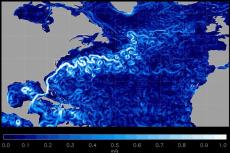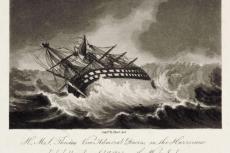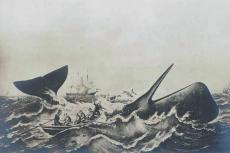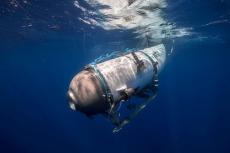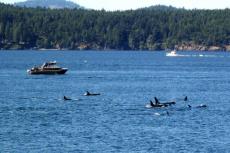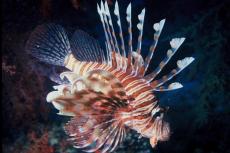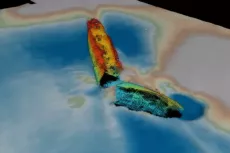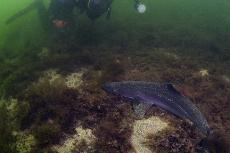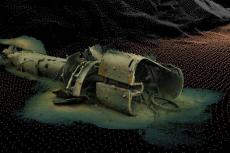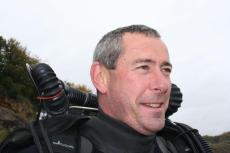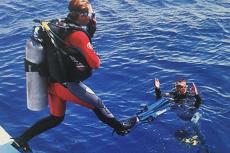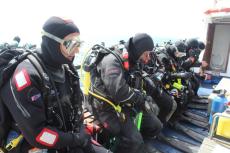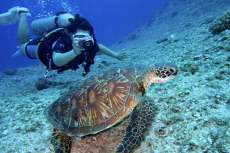Outside my window, the South Atlantic lay unbroken—an azure expanse of ocean below and sky above. Three hours after passing the Namibian coast, a lone patch of clouds appeared on the horizon. As we approached, I could just discern patches of green peering through. Atop a narrow ridge, a tiny strip of runway appeared, the sheer drops at each end plummeting to the sea. The necessity of the refuelling stop in Windhoek became apparent; if landing conditions were not favourable, we would have to return to Windhoek. There simply was not anywhere else to go.
Contributed by
Sitting in the South Atlantic 1,200 miles west of Southern Africa and 1,800 miles east of South America, St Helena is the dictionary definition of isolated. A mere speck 10 miles long and six miles wide, the island ascends 4,000m from the ocean floor to its highest point at 820m above sea level.
First discovered by the Portuguese in the 15th century, it remained uninhabited until the British East India Company founded Jamestown in 1659. Today, the island is Britain’s second oldest territory after Bermuda. For those wanting to get away from it all, this is the place! Friends Farhat (Raf) and Francisca Jah from their UK-based African and Oriental Travel Company pioneered diving on the island and have played a pivotal role in developing St Helena tourism.
In 2018, they had brought the first diving tour group by air and their report was highly enthusiastic. They insisted I come, but I was not initially enthusiastic; the trip would be long and expensive, and what was there to see? Then again, past experiences have taught me that the unexpected places prove to be the best surprises.
Getting there
For centuries, the only way to arrive was by boat. In recent years, the RMS St Helena made the five-day journey from Cape Town every three weeks and was the island’s sole connection to the outside world. That all changed in November 2017, with the opening of the airport. Although finished in 2016, aircraft were unable to land due to excessive wind shear. It was another year before the first commercial flight landed, and a five-day trip was now only six hours from Johannesburg.
I must admit, the flight filled me with trepidation. Before departing, I read an article that claimed it to be the most terrifying landing the author had ever experienced. During the refuelling stop at Windhoek, Cisca showed me a phone app entitled “St Helena Airport,” where the player attempts to land a plane on a 3D graphic representation of the island.
Based on her success record, I was thankful she was not piloting our aircraft. Happily, our arrival was smooth, with nary a bump. The bus ride between the terminal and the plane at Johannesburg’s airport was more nerve-wrecking. Once on St Helena, the island way of doing things became apparent rightaway. It took a full hour to clear immigration and retrieve our luggage.
Considering we were the only flight for the next three days and there were only 75 passengers, the resulting queue was somewhat baffling. Then again, as the staff only work a few hours a week, I surmised they wanted to make the most of it.
With immigration cleared, I walked the few metres to the luggage carousel. A stern-looking woman approached with some questions, specifically whether I was bringing in food. “I have a chocolate bar. Is that okay?” I queried. “That depends on whether I’m hungry,” she responded, before breaking into a wide grin. “Welcome to Saint Helena!”
Leaving the airport, the rugged landscape was a rock-strewn palette of ochre and sienna. Don’t like the scenery? Wait five minutes. As the road ascended, barren landscape quickly transformed to verdant. Trees appeared and we soon passed Longwood House, Napoleon’s residence.
Reaching the ridge top, Jamestown appeared far below, wedged between steep cliffs. We soon arrived at the Mantis Hotel, our home for the following week. The island’s most upscale accommodation, it occupies a row of former officers’ quarters dating from the 18th century. The elegantly appointed rooms featured a much sought-after commodity: free and reliable Wi-Fi.
Jamestown
With the afternoon free, I grabbed my camera and went for a ramble. Jamestown is steeped in history, with over 100 listed buildings. Main Street is esteemed as having one of the finest collections of pristine Georgian architecture in the world, with many buildings constructed from the local volcanic rock. Each building had a story.
Across from the Mantis, New Porteous House hosted the Duke of Wellington, while just down the road, the century-old Consulate Hotel featured a life-size figure of Napoleon on the upper terrace. Dating from 1772, St James’ Church is the oldest Anglican church in the Southern Hemisphere. Coffee aficionados will want to sample a cuppa at the St Helena Coffee Shop. Grown at only two plantations, the locally grown coffee is excellent and amongst the world’s most expensive. Bags are available at the shop for GB£15 but can fetch GB£90 at Harrods in London!
However, Jamestown’s most iconic landmark is not a building. As staircases go, Jacob’s Ladder is seriously epic. Constructed in 1829, the 699-step staircase links Jamestown with Ladder Hill Fort. An incline railway was also constructed, but termite damage prompted its dismantlement in 1871.
For those adverse to heights, merely looking up the vertiginous ascent is enough to induce vertigo. For the intrepid able to conquer it, a certificate is available at the museum. “Not today,” I mumbled to myself.
During my walkabout, I detected a definite vibe. It felt different, but I initially could not determine how. Then it struck me. Passers-by said hello, their faces not buried in personal electronic devices. Television screens did not bombard one with 24-hour news, and golden arches were absent from the landscape. It was slower, gentler—reminiscent of times past, when I grew up.
Before I knew it, I was won over! Venturing to the waterfront, I followed the road as it passed the stately old Customs House leading to the wharf. Opposite it, a few old warehouses and a sweep of shipping containers lined the roadway.
Above, the vertiginous cliffs were encased in huge swathes of netting to prevent rockfalls. I soon found Sub-Tropic Adventures and beyond that, our embarkation point for the next day’s diving. It was going to be a long walk with my underwater camera gear.
Local people and culture
And yes, the inhabitants really do call themselves Saints. The various nationalities and cultures passing through have had a conspicuous impact on the island’s population, with many residents tracing their roots back several centuries or more. The 4,800 inhabitants are a blend of Africans, mixed-race Africans and Europeans, and British settlers and labourers from the Indian sub-Continent, East Indies, Madagascar and China.
I asked Anthony how long his family had been here. “We’ve been here for 200 years,” he said. “We have some African, but mostly, we are a mixture of Portuguese and Chinese.” DNA testing would no doubt reveal some extraordinary results!
Although English is the official language, that is not immediately apparent. The local dialect, called “Saint,” takes some getting used to. My friend Christopher Bartlett likened it to a cross between Cornwall and Australia, but to my ears, it sounded like a mélange of Kiwi, Australian and English. An amalgamation of inflections, it uses ordinary English words in decidedly unusual ways. “What is your name?” translates to “What you name is?” and “We are going to town” is “Us goin’ town.” The locals tone it down for the tourists, but once they start conversing in full-on patois, subtitles are required. Listening to a conversation between the women at the coffee shop, I could not decipher a word!
Diving
The next morning, everyone gathered at 9:00 a.m. to assemble their gear. Two groups were going in two zodiacs—downright chaotic by St Helena standards! Getting aboard proved tricky, stepping down to the zodiac as it pitched in the relentless surf. Fortunately, numerous helping hands ensured that divers and gear boarded safely. With Anthony’s dad, Larry, at the helm, we set out for our first dive site at Lighter Rock, a 20-minute boat ride east of James Bay. Isolated islands are magnets for undersea life and St Helena was no exception. Emanating from the South African coast and driven by southeastly trade winds, the Benguela Current meets the cool waters of the South Atlantic Gyre.
Bolstered by the resulting mixture, the diverse marine fauna features both Western and Eastern Atlantic and circumtropical species. Lighter Rock. Plunging in revealed an environment I had not encountered before. Dramatic seascapes echoed the craggy terrain above, with huge boulders and sheer rock faces riddled with caves, archways and overhangs. The visibility was exceptional, at times approaching nearly 50m, no doubt due to the lack of sediment from runoff. The water temperature was a comfortable 25°C, and the 5mm wetsuit provided ample warmth.
Although reef-building corals were absent, an abundance of tunicates, algae and sponges encrusted the rock faces. Endemic orange cup corals add a splash of colour along with harpoon weed (a red algae), tiny anemones and various species of hydroids. What was really astounding was the fish life. Despite the lack of coral reefs or kelp forests, there was no deficiency of fish life—in fact, quite the opposite.
Due to long-term isolation, the island is home to a variety of endemic species. Most prolific was the St Helena butterflyfish, whose numbers were astonishing. Found at every dive site we visited, schools were so dense that divers could virtually disappear within them. Looking at my photos later on, I discovered that what appeared to be strobe backscatter was actually a near-infinite number of fish!
Bedgellet wreck. A short boat ride away was our second dive site, the Bedgellet. One of eight diveable wrecks around the island, it was brought from the United Kingdom to salvage another wreck, the Papa Nui. However, it broke loose from its moorings during a storm, damaging both itself and other vessels.
In 2001, the St Helena government sank it as an artificial reef near Long Ledge on the southern coast. Resting upright at 18m, the vessel was a magnet for fish life. Schools of butterflyfish swarmed upper decks encrusted with growth. Below, glasseye snappers and island hogfish flashed crimson amongst the numerous openings. Fluffy bearded fireworms scuttled across rock faces while large spotted scorpionfish were nearly imperceptible—something I discovered when I nearly put my hand on one!
Masses of sergeant majors and ocean surgeonfish ebbed and flowed across the reef, while yellow goatfish patrolled the bottom, especially around the island’s wrecks. Squirrelfish and blackbar soldierfish mingled under ledges and overhangs as spotted morays peered from their dens with mouths agape. More elusive were hedgehog butterflyfish, distinctively patterned with a chocolate brown head and lower half, topped by white above.
Strangely, what appeared to be two species of parrotfish was actually one. The strigate parrotfish features two colour phases; it is believed the smaller yellow versions are females and the larger, dull purple-grey individuals are males.
Other notable endemics include island hogfish, St Helena white seabream, flameback angelfish, St Helena flounder, St Helena wrasse, St Helena damselfish and Melliss’s conger. Seven species of moray eels have been recorded, with spotted and brown being the most commonly encountered by divers. Numerous crab and shrimp species, including several endemics, can also be seen, especially on night dives.
Both green and hawksbill sea turtles are present too, although there have been no records of successful nesting on the island. A variety of pelagics have also been recorded, including skipjack and yellowfin tuna, wahoo, sailfish and swordfish.
Northwestern coast
The remainder of the week was spent exploring the area’s excellent dive sites, the majority of which were situated along the island’s northwestern coast. As conditions roughened, we missed out on some shallower sites and wrecks, but there was still plenty to discover.
As Anthony was occupied with the second group of divers, Raf guided us at the sites—his previous experience diving the island proving indispensable. The dive site of Long Ledge was especially striking; its steep formations resembling the steps of a colossal undersea temple. Another favourite was the Frontier wreck, a fishing trawler confiscated by the government after a large amount of cannabis was discovered aboard.
Sunk in 1994 to form an artificial reef, it now rests in 27m of water. Part of the vessel has toppled on its side, the corroding frame resembling the ribs of a long-dead whale. Along with the ubiquitous butterflyfish, St Helena white seabream swarmed in abundance along with St Helena sharpnose puffers, island cowfish and St Helena wrasse. Nudibranchs and spiny lobsters were commonly observed here, but I was so engrossed in the big picture, I forgot to look!
Western coast
On another day, we headed for the western coast to dive a pair of sites. Both located near the airport, Sugar Loaf and Barn Cap featured astounding visibility, in excess of 40m. Amalco jacks were especially curious, frequently approaching divers, while large ocean triggerfish proved more wary. Smaller cousins of the manta, Chilean devil rays cruised the open water. Although common, we did not see any for the first three days but saw seven here during two dives. Other sites included Egg Rock, Billy Mayes Revenge and Torm Ledge, each revealing amazing fish life and superb visibility.
The diving was quite easy, with most sites averaging around 20m. However, with the nearest decompression chamber in South Africa, it was imperative to be aware of bottom times. For the most part, currents were minimal. A great book for divers is the Marine Life of St Helena by Judith Brown. Available at local shops, it is a comprehensive guide to the island’s marine life and wrecks. Anthony contributed some of the photos in the book.
Topside attractions
Although I had come for the diving, there was plenty to experience topside. On one afternoon, I took a short tour with Wayne Crowie, who had driven us from the airport on the first day. Our first destination was the High Knoll Fort, dating from 1874 and the largest of the island’s military installations. From town, it appears Jacob’s Ladder is the high point, but the road ascended farther to the fort’s lofty perch at 584m.
The view from the eroding ramparts commanded spectacular vistas over the island—a miniature continent of mountains, forest, farmland and semi-desert. Our final stop was Plantation House, the governor’s official residence. Huddled amongst forested grounds, the stately manor was erected in 1792 by the East India Company.
It is also home to the Island’s most famous resident: Jonathon the tortoise. At 188 years old, he is believed to be the planet’s oldest known living land creature and shares his outdoor compound with several other tortoises. His advanced years do not stop him from chasing the females, though. Well, “chasing” might be something of an exaggeration.
With visiting hours over, I had to settle for a walk along a fenced pathway. I could just discern Jonathon hiding under a cluster of low trees. Opposite the house, farm plots extended into the distance, with a variety of crops on display.
Above the property, white birds wheeled overhead. I asked Wayne what they were, and he replied, “White birds!” In fact, they were fairy terns, a common island resident. The island’s early inhabitants were not particularly creative in the naming department.
During the week, I spoke to residents about life on the island and the responses were as varied as the islanders’ genetic makeup. A referendum was held on whether to build the airport but was by no means a landslide win as many were content with the RMS St Helena.
Once the airport opened, tourist arrivals were promised but have yet to materialise, leaving many frustrated. Flights are generally full, but only arrive twice weekly, on Saturdays and Tuesdays. Run by SA Airlink, the Embraer E190-100IGW seats 98 passengers, but numbers are limited to 76 in case a tailwind landing is required during challenging weather.
Cuisine
Most evenings, we dined at the Mantis. The meals were excellent and very reasonably priced, especially considering our remote location. Contrary to what we had heard in Johannesburg, the island had not run out of beer! On another night, we ventured up to Rosie’s Place, located in Halftree Hollow, near the top of Jacob’s Ladder. Ascending the narrow switchbacks, I thought it appropriate that Wagner’s “Ride of the Valkyries” was playing on the taxi stereo.
Before dinner, I had a chat with owner Rosie Bargo. I asked how long they had been open. “It’s been just over a year now. Going on a year and two months, really,” she said. “Locals from all over the island and tourists, when they are on the island, tend to stop by. They like the view.” Sitting on the veranda, watching the sun burnish a band of low-lying cloud, it was easy to see why.
I had heard that it is difficult to get people to work evenings. “Yes, that’s always a struggle on the island,” she said with a laugh. “I’ve lived in the States for four years, and the young kids of school age, they are working in the restaurants; that’s how they make their money.
Here, it’s a total opposite. Lots of people are used to 9-to-5 jobs and don’t want to work the unsociable hours. Not at all! It’s been a struggle. So far, I have three chefs, which are from South Africa, and they do excellent food, so you will have to try some later!” And, try it, I did. I ordered a pizza, and it was superb.
Whale sharks and cetaceans
Our journey coincided with the arrival of some very big visitors. During the summer months between November to March, whale sharks congregate around the island in large numbers. The world’s largest fish, they can reach lengths up to 14m, but these gentle giants are filter feeders, sieving plankton and small fish through mouths up to 1.5m wide. Although they can be observed while diving, whale shark excursions are done by snorkelling.
Guidelines are stringent; participants must remain 3m away from the sharks and no touching is allowed. However, I quickly learnt that the sharks seem unaware of the rules. Photographing happily, I was unaware of just how close it was.
Looking up, I was startled to see a whale shark was only an arm’s length away! I frantically manoeuvred to get out of its way, scraping my knee on it in the process. “It wasn’t my fault! I wasn’t even moving,” I protested to Anthony, who had watched the entire episode from the boat.
“Don’t worry about it,” he said with a chuckle. We spent the next 40 minutes with the shark, which proved to be exceedingly tolerant. During encounters in other countries, whale sharks descended the moment I hit the water.
Not so here, as they were both tolerant and highly curious. If they moved away, pursuit was not necessary, as they inevitably returned for another look. They also were not surrounded by a fleet of boats, so I suspect snorkellers are still a curiosity rather than an annoyance. It was hands down, the best encounter I had ever experienced.
A second excursion was available two days later, and several of us jumped at the opportunity. This time, we headed for the western coast and quickly encountered another whale shark. In a great moment of bad timing, it appeared alongside the boat just as I did a backward roll.
For a brief moment, I thought I was going to get squashed between it and the boat! This individual proved even more curious, but this time, I manoeuvred out of the way in plenty of time. Seeing it approach one of the other snorkellers, I marvelled at just how big it was. This one was easily 10m long and could have swallowed her in a single gulp!
St Helena’s waters are also home to a number of cetacean species. Spotted, rough-toothed and bottlenose dolphins are year-round residents, while humpback whales can be found between June and December. While individual whales are sighted in June, mothers with calves are sighted from July onwards, which indicates the females arrive to give birth.
Rugged terrain
On our last day, we did a full-day island tour with Aaron Legg of Aaron’s Adventure Tours. Despite its compact size, the island boasts an extraordinary range of topography, from grassy plains and semi-desert to lush, forest-clad peaks. It is also extremely rugged, so driving anywhere takes a lot longer than one would expect.
Our four-wheel drive proved essential, as Aaron took us on some bone-rattling roads. With names like Longwood, Half Tree Hollow, Deadwood Plain, the Gates of Chaos and Great Stone Top, I felt like I had been transported to Middle Earth!
Historical figures
The island also features a grand history, with famous visitors, including Captains Cook and Bligh, Edmond Halley and Charles Darwin. However, there is one man to which the island is inexorably linked: Napoleon Bonaparte. After his defeat at the Battle of Waterloo in 1815, Napoleon was exiled to St Helena, spending his final years at Longwood House where he died in 1821.
After stopping for a view of Jamestown, we set off for Napoleon’s Tomb, situated in the Sane Valley. An easy 1km return walk, the setting was quite beautiful, surrounded by gardens and shaded by tall trees. The only thing missing was Napoleon himself. He was only interred here from 1821 to 1840, when he was exhumed and taken back to in Paris for burial.
Napoleon died on 5 May 1821, and much debate surrounds the actual cause of death. Some claim the British poisoned him, but the story told at Longwood is that he succumbed to long-term exposure to toxins in the wallpaper. In 1858, the French government was granted possession of Longwood, and today, along with the burial site, it remains a French property, administered by a French representative under the authority of the French Ministry of Foreign Affairs.
Nature, flora and fauna
Passing the wind farm I had seen from the fort, a sign indicated the site of a Boer internment camp. During the Boer War between 1900 to 1901, over 6,000 Boer prisoners were held on the island. A detour out to the coast revealed dramatic cliffs with stunning views of Turk’s Cap and the Barn, formations we had seen from one of our diving excursions.
Heading back, we kept a lookout for wirebirds, the island’s sole indigenous bird species and national bird. Deadwood Plain’s open expanse is a favoured nesting area and we observed many, with several right by the roadside. From less than 200 birds in 2006, numbers have rebounded to over 500. For our packed lunch, we stopped at the Millennium forest, once home to the Great Wood, an extensive forest of indigenous gumwood trees.
With no native land mammals, the flora and fauna were soon decimated by introduced livestock, cats, rabbits and rats, with several plant and insect species becoming extinct. In 2002, the Millennium Forest project was implemented to replant part of the lost forest. Gumwood is slow-growing, so it will take time to regain its past grandeur. In the meantime, if you get lost, just stand up.
After lunch, another off-road excursion took us to a dramatic overlook of the airport and the peaks of Greater and Little Stonetop. Ground-hugging sour plum carpeted a semi-desert landscape of ochre and sienna tones, but only minutes away, the landscape was dominated by New Zealand flax.
The manufacture of flax fibre generated considerable revenue for several decades, but transport costs and competition from synthetic fibres initiated its downfall. The British Post Office’s decision to use synthetic fibres for its mailbags dealt the fatal blow and the mills closed in 1965. “The Suez Canal and elastic bands sealed the fate of Saint Helena,” said Aaron with a chuckle.
Landscape and landmarks
At the island’s southern end, planted eucalypt forests dominated, while higher still, tree ferns shrouded Diana’s Peak, the island’s highest point at 818m. En route, we made a quick stop at Bell Rock, which really does sound like a bell when struck. Passing one of the island’s coffee plantations, we commenced our descent to the coast.
The landscape changed yet again, giving way to an arid landscape. Dominant landmarks were twin rock pillars called Lot and Lot’s Wife, named for the biblical tale of Sodom and Gomorrah. We passed a tiny Baptist church with Lot’s Wife as a backdrop, and I was amused by the irony!
Nearer the coast, the arid terrain featured date palms and I felt like I had gone from Hawaii to the Middle East in a matter of minutes. Arriving at Sandy Bay revealed a St Helena first: an actual beach—the black sand a testament to the island’s volcanic origins. At one time, a stone wall separated the shore from the valley, as it was a favoured spot for smugglers to come ashore. Today, only a small section of the wall remains.
Although inviting, the rough waters are unsafe for swimming. Heading back to Jamestown, we passed the familiar sights of Plantation House and Half Tree Hollow, before our zigzag descent back to town. Despite the island’s compact size, we did not come close to seeing everything.
Afterthoughts
Reflecting on my stay, the island was a curious cross between a 1970s time warp and a parallel universe. Along with all the wonderful things the island has, it is notable for all the things it does not: ATMs, fast food chain restaurants, billboards and shopping malls.
Make no mistake though, this is no criticism. Quite the opposite, in fact. In our madcap era of hyper-connectivity, St Helena was a wonderful breath of fresh air, harkening back to simpler times.
Despite the new air connection, St Helena remains off the beaten path, but that is a huge part of its appeal. Even in the 21st century, it is reassuring to know places still exist where the journey remains an integral part of the destination. ■
Special thanks go to the African and Oriental Travel Company (orientafricatravel.com), Sub-Tropic Adventures (stadventures.com), and the Mantis St Helena (mantissthelena.com).

